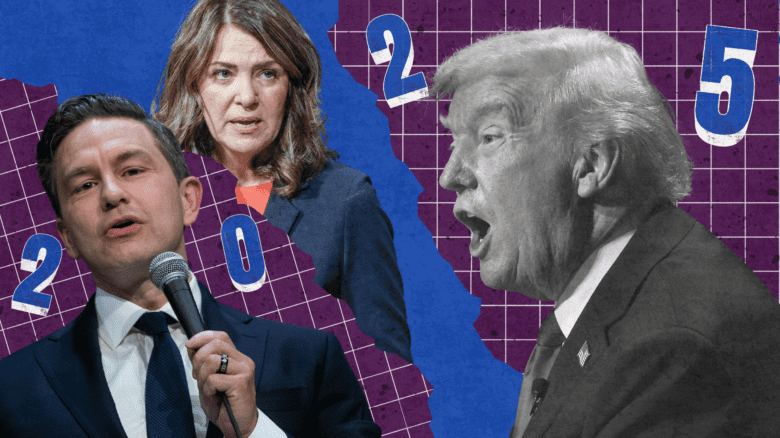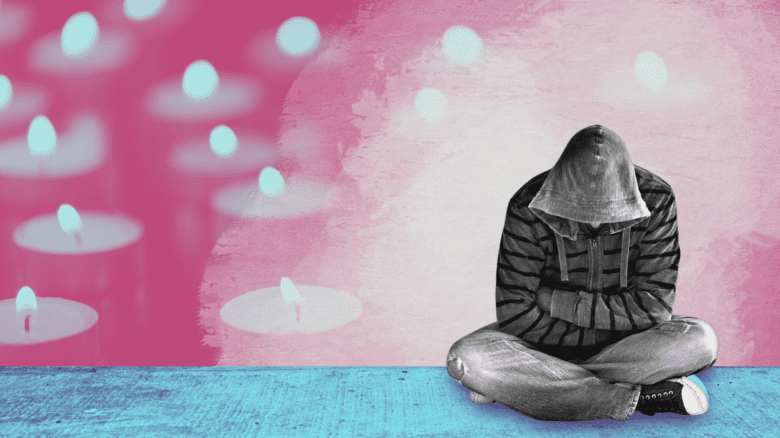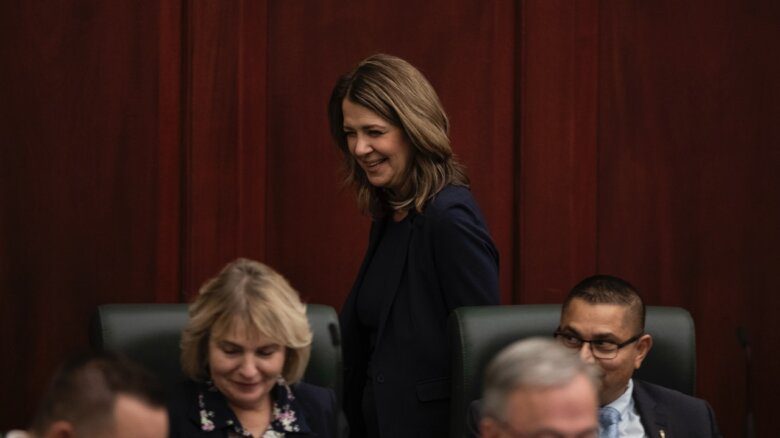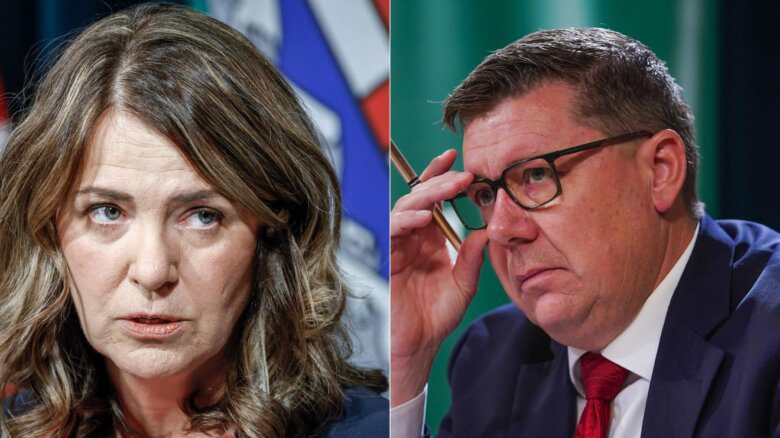The so-called 1 Million March 4 Children was, in part, a sequel to the Freedom Convoy occupation, with many of the same players organizing the marches that happened across the country—but they were also something new. More than just a conglomerate of far-right agitators, conspiracy theorists, grifters and grievance tourists, these marches also featured a large contingent of conservative religious groups and families, and a few genuinely concerned parents who are wrapped up in the moral panic that somehow, their children are being indoctrinated into wanting to mutilate and sterilize themselves in the service of “gender ideology.” And of course, there are political actors willing to use these events to further their own goals.
Despite the protests of some of the attendees, these protests were virulently anti-trans and anti-queer. The videos from the Calgary event, where a young Muslim boy was coached into telling the crowd that “gays are psychopaths” is indicative of where the actual indoctrination is happening among socially-conservative communities, but some of the other comments are just as revealing.
On the day of the marches, Prime Minister Justin Trudeau tweeted that “transphobia, homophobia and biphobia have no place in this country,” and that “we stand united in support of 2SLGBTQI+ Canadians,” while Conservatives took to social media to denounce it several days later. Pierre Poilievre called the statement “divisive” and insisted that “parents should be the final authority on the values and lessons that are taught to children” and told Trudeau to “butt out,” as though he had any policy levers to play here other than moral suasion. Others claimed Trudeau was telling Canadians with “deep religious convictions” that they have no place in Canada, which sounds more like they were telling on themselves than they were Trudeau.
But how did we get here? To an extent, much of this is just a replay of history, and Anita Bryant’s “Save Our Children” campaign from the late 1970s, which resurfaced again in the 1990s, which was virulently homophobic and used the libel that gays were coming for children. To see people on social media claiming that “we were fine with gays until they started coming for kids” is a telling sign that this line of thinking never went away but, this time, trans people were added to it. In many parts of Canada, debates over inclusive sex ed curriculums in 2015 stirred up Muslim communities, and this is an extension of that—where acknowledging the existence of queer and trans people is seen as some kind of affront, in part because in some cultural communities, these identities are seen as some kind of “western disease.” More to the point, it is equated as being a choice. The tortured logic is that being queer or trans is a choice, and children are too young to make this choice, therefore any education around it must be indoctrination, and any children or youth that come out as queer or trans must be the victims of some kind of insidious plot.
With regards to the moral panic around this, it has been said that any real moral panic needs something true at its core, such as serial killers using satanic imagery in the 1980s and fuelling the Satanic panic (whose themes persist in QAnon mythology, adopted by some of the conspiracy theorists that take part in these protests). It is probably that the false and discredited reporting from the U.K. and the U.S. around gender clinics in children’s hospitals, and the claims of mutilation and sterilization have fuelled this particular moral panic. After all, everyone wants to believe they are protecting children, which is why these kinds of tactics prey on this instinct so easily.
There is more to this than just a moral panic. The greater dynamic at play relates to something known in academic circles as “ethnic outbidding,” which has been defined as “when politicians compete for the support of a particular ethnic group, leading to ever greater demands to protect that group at the expense of others.” While this was first identified by scholars in the conflict in Sri Lanka, it has been at play in places like India and the U.S., with the example of Ben Carson saying Muslims shouldn’t be president, and Donald Trump “outbid” him by saying they should ban Muslims from entering the U.S. What is key here is that a majority group will target a vulnerable minority in order to “put them in their place” and reap political rewards for doing so, which can go so far as to change constitutions to remove protections in some countries. The need by the groups assembled at these marches to put queers and trans people in our place is clear in the rhetoric they employ, while politicians like Blaine Higgs or Pierre Poilievre feed on this notion that people have had “enough” of having progressivity shoved down their throats—hence they are “protecting” the majority at the expense of queer and trans people.
Of course, in the Canadian context, ethnic outbidding has to be nuanced in what can be described as an intersectional way—while there is some outbidding between the Conservative Party and the People’s Party of Canada for white supremacists’ votes, the Conservatives know well enough that Canada’s population is too diverse, particularly in the vote-rich suburbs, to make a purely ethnic play viable. This means that they need to ally with other social conservatives in minority communities to make the kinds of outbidding work. In this case, the excuse of “parental rights” is pure Christian nationalism imported from the U.S. that allies with other groups such as conservative Muslims or Black evangelicals. The Conservatives are no strangers to trying to recruit from socially conservative elements within ethnocultural communities—Jason Kenney made a mission of it when he was Stephen Harper’s minister for multiculturalism, though it was less electorally successful than they like to claim.
Telling these groups that their children are in danger is the rhetorical strategy. It creates a temporary alliance between the far-right, socially conservative visible minorities, and others that each thinks they draw benefit from. For the far-right actors, it means getting to shield themselves from accusations of racism (even though many of them were radicalized via Islamophobia), while these conservative visible minorities think they are getting mainstream acceptance, never mind that it’s at the expense of a different vulnerable minority that isn’t them. Apparently, nobody has learned any lessons from history, that fascism starts with targeting trans people, then queers, then Jewish people, and then other ethnic or religious minorities. The parental rights angle also aligns with those who are clearly homophobic but who don’t think they are, bringing all of these groups together.
Trying to counter this will be a difficult task, because it can’t entirely be done by simply calling out homophobia and transphobia. With some of these protesters, particularly those from diverse ethnocultural communities, there needs to be more of a focus on not only combatting disinformation, but also developing empathy so that they can see that they have common cause with vulnerable minorities, and that for queer and trans people, it’s not a choice and we’re not indoctrinating anyone. That will mean working with minority-language queers and allies to monitor and challenge disinformation in their communities of origin, and for minority queer and trans people to lead those conversations, which puts them in a very difficult position. None of this is going to be easy, but if we’re going to rob political bad actors of their rhetorical tools, we need to do so in a lasting way.
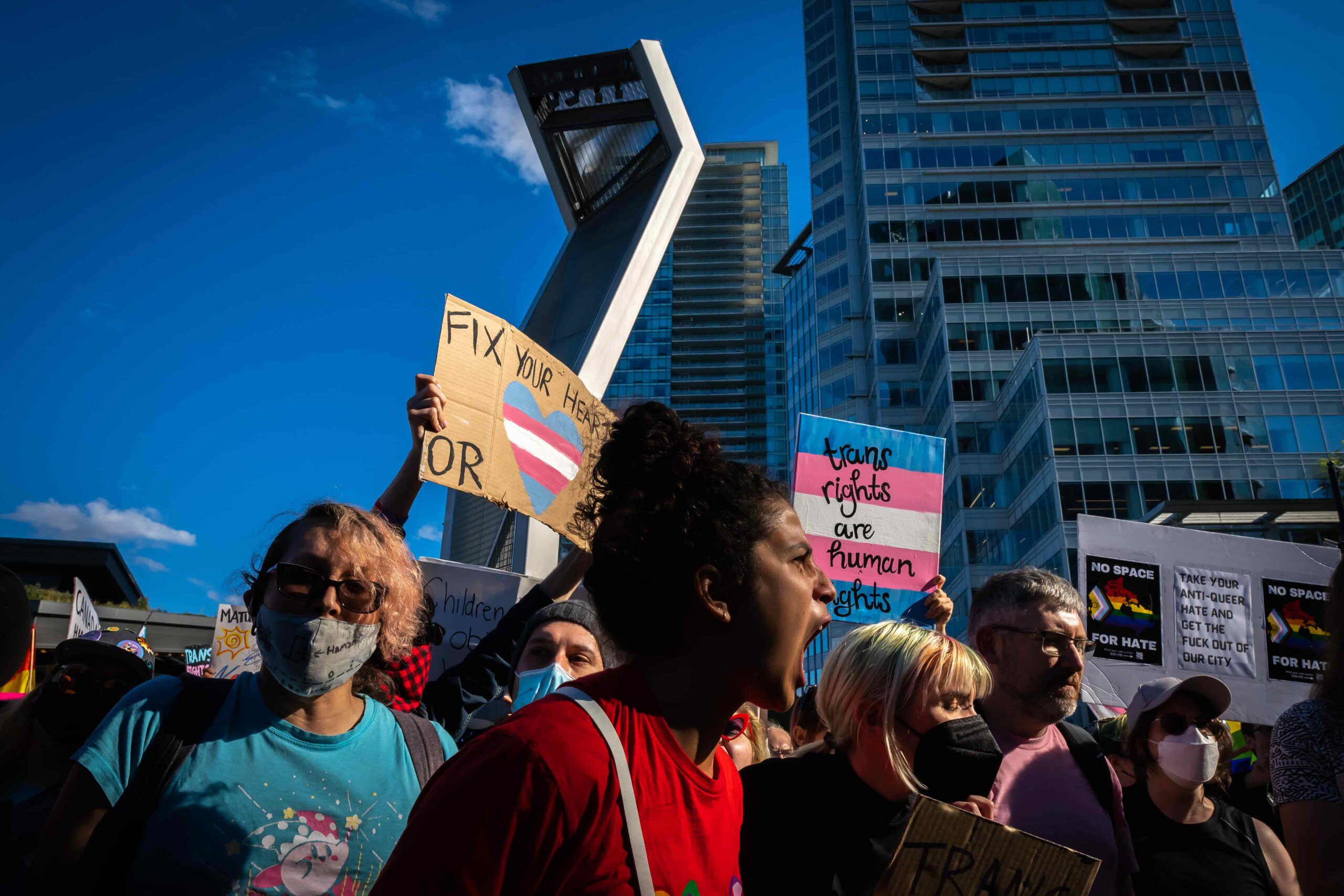

 Why you can trust Xtra
Why you can trust Xtra